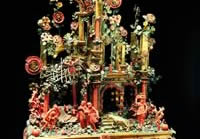
Trapani
Trapani’s origins are not known for sure. Indeed, legend, history and archaeology tell different stories about its foundation.
What we do know for certain is that, in antiquity, Drepanum (Trapani’s ancient Roman name) was one of the earliest Phoenician stopovers in the central Mediterranean.
Over the centuries, the beaches of Trapani have been invaded many times, and the city's different cultural layers are reflected in its architecture, for example in the Jewish Palazzo della Giudecca. In the sixteenth to eighteenth centuries, numerous churches were built in Trapani.
The most important monuments are the Cattdrale di San Lorenzo (Cathedral of San Lorenzo), the church of Santa Maria del Gesù, the church of the Collegio and the church of Purgatorio which houses the 20 statue tableaux of the Misteri, used in the town’s famous Easter procession.
The Torre di Ligny (Tower of Ligny) was built at the highest point of the city in order to defend Trapani’s territory. The tower is now home to the Museum of History and Prehistory.
Moving away from the old town, visitors can admire the ornate Sanctuary of the Annunziata and visit the adjacent Pepoli Museum which exhibits sculptures and historical relics. The perfect way to end a visit to Trapani is by watching the sun set over the Trapanese salt marshes that occupy the part of the coastline that runs from the west coast of Trapani to the Stagnone islands.
Photo Gallery Trapani






